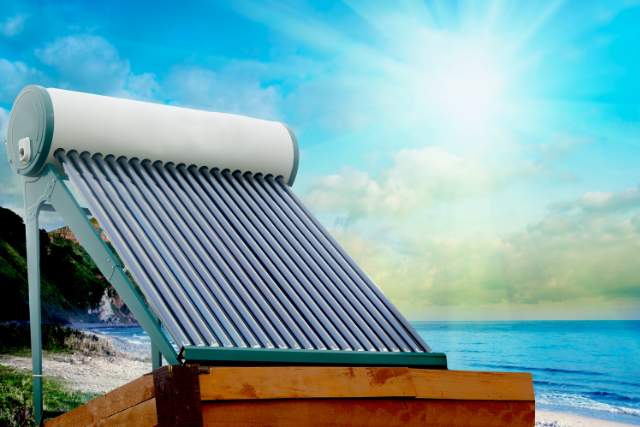Menu
Ut tellus dolor, dapibus eget, elementum ifend cursus eleifend, elit. Aenea ifen dn tor wisi Aliquam er at volutpat. Dui ac tui end cursus eleifendrpis.
Ut tellus dolor, dapibus eget, elementum ifend cursus eleifend, elit. Aenea ifen dn tor wisi Aliquam er at volutpat. Dui ac tui end cursus eleifendrpis.

A solar thermal collector collects heat by absorbing sunlight. The term “solar collector” commonly refers to a device for solar hot water heating, but may refer to large power generating installations such as solar parabolic troughs and solar towers or non water heating devices such as solar air heaters.
Solar thermal collectors are either non-concentrating or concentrating. In non-concentrating collectors, the aperture area (i.e., the area that receives the solar radiation) is roughly the same as the absorber area (i.e., the area absorbing the radiation). This type has no extra parts except the collector itself. Concentrating collectors have a much bigger aperture than absorber area (additional mirrors focus sunlight on the absorber) and only harvest the direct component of sunlight.
Non-concentrating collectors are typically used in residential and commercial buildings for space heating, while concentrating collectors in concentrated solar power plants generate electricity by heating a heat-transfer fluid to drive a turbine connected to an electrical generator. Unglazed liquid collectors are commonly used to heat water for swimming pools but can also be applied to large scale water pre-heating. When loads are large relative to available collector area the bulk of the water heating can be done at low temperature, lower than swimming pool temperatures where unglazed collectors are well established in the marketplace as the right choice. Because these collectors need not withstand high temperatures, they can use less expensive materials such as plastic or rubber.
The main use of this technology is in residential buildings where the demand for hot water has a large impact on energy bills. This generally means a situation with a large family, or a situation in which the hot water demand is excessive due to frequent laundry washing. Commercial applications include laundromats, car washes, military laundry facilities and eating establishments.
Solar power is harnessed using Solar Photovoltaic (PV) technology that converts sunlight (Solar radiation) into electricity by using semiconductors.
There are different ways to install solar panels for home. First, you have to do homework, such as Choose installation area, select type of mounting structure, and no. of solar panels. For that you need to call our an engineer for site survey from.
To choose the best solar panel for your home and business is a big decision. I tell you, some parameters, that can help to take decisions: use, capacity, technology, durability, temperature, co-efficient, brands, and consumer reviews. To compare solar panels.
It depends on your prospective. In the production of solar cells metals like mercury and lead are used because of which a little number of oxides of the metals are released in the environment. Over a long period of time, it does not cause pollution but looking only at manufacturing it does on a small scale.